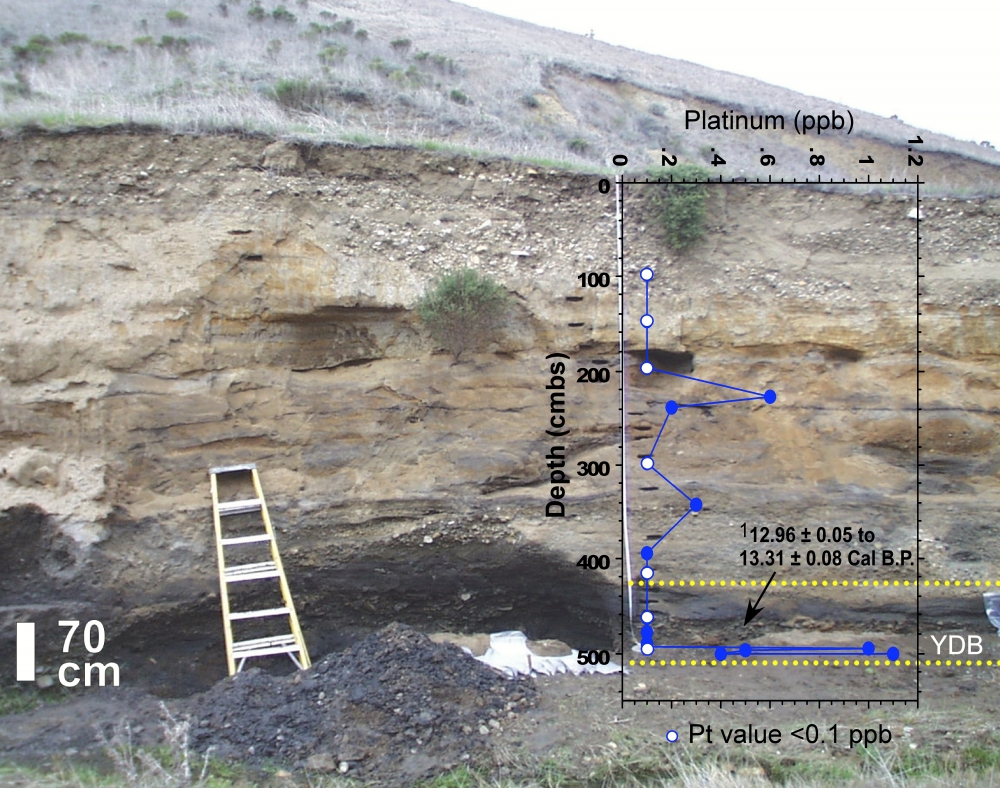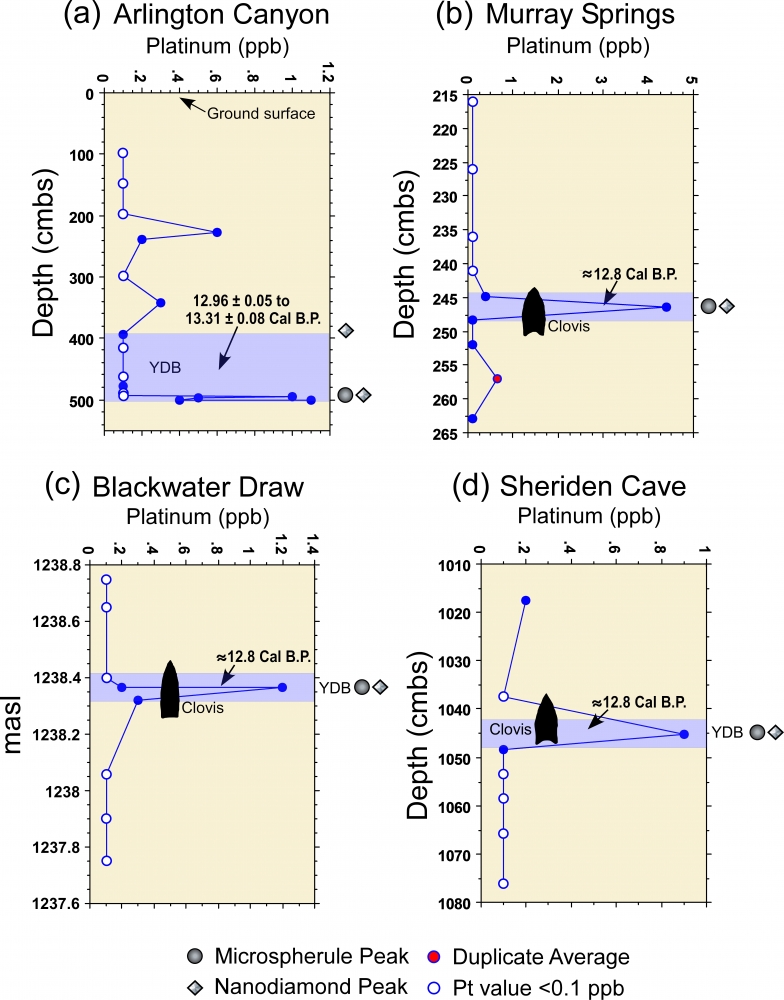Heavy Metal

Roughly 13,000 years ago, large ice-age mammals known as megafauna — horses, camels, mammoths, mastodons and many others — suddenly disappeared in North America. At the same time, a widespread human culture vanished. Mounting scientific evidence suggests this happened in dramatic fashion by a comet or an asteroid slamming into the Earth.
New research by UC Santa Barbara geologist James Kennett and colleagues bolsters the argument for indications of such an event, which ushered in a cool period known as the Younger Dryas.
The team had previously identified, from a thin layer at the Younger Dryas Boundary (YDB) dated to 12,800 years ago, a rich assemblage of high-temperature spherules, melt glass, nanodiamonds and other exotic materials, which can be explained only by cosmic impact. Now they can add platinum to the list.
Prompted by a 2013 study in which Harvard University scientists reported platinum in cores from the Greenland ice sheet, Kennett and colleagues expanded their analyses to include the heavy metal. Their latest results, which appear in the journal Scientific Reports, show even higher concentrations of platinum than those found in the ice cores.
“We identified an easily measurable and identifiable fingerprint for this impact layer, which has previously been well dated,” said Kennett, a professor emeritus in the Department of Earth Science. “This provides an invaluable time marker for comparison with the multitude of abrupt changes that occurred around this time interval, including the extinctions, human cultural shifts and population decline, and climate change.”
The researchers had sediment samples from 11 sites analyzed for platinum and palladium, which according to Kennett also are indicative of an impact. While both elements work together, the new paper mainly focuses on the platinum anomalies.
The team started with three locations where the YDB impact layer had been previously identified: Arlington Canyon on Santa Rosa Island off the coast of Santa Barbara, Blackwater Draw in eastern New Mexico and Murray Springs in southeastern Arizona. All show a platinum peak that corresponds with the YDB.
The investigators added Sheriden Cave in Ohio, where remnants of extinct megafauna were evident up to the impact layer. Then the scientists expanded their analysis to include seven additional but less well-dated sites in North and South Carolina that contained archeological evidence suggesting the position of the YDB layer. In each site a platinum anomaly was found — exactly at the onset of the Younger Dryas, as predicted.
“There’s a high chance a researcher who runs the same analysis will find a platinum anomaly, but it’s not 100 percent sure,” said Kennett. “Most of the sites that we analyzed reveal the platinum anomaly, but not all. This is not surprising because the geological record is not perfect. There’s reworking, erosion. Some sites have really high-resolution stratigraphy and continuous records, while others have much lower rates of deposition, a coarser stratigraphy and are not as finely resolved. The Greenland ice sheet platinum data is so precisely tuned, you can almost discern the changes annually. But this resolution is not possible for most terrestrial sedimentary sites.”
This latest research provides perhaps the most persuasive evidence yet that a cosmic impact precipitated the onset of Younger Dryas climate cooling. “It’s conclusive that an impact was the cause,” Kennett said. “However, some scientists still debate whether the proxies came from the redistribution of terrestrial materials or from a cosmic impact. The platinum anomaly data we report supports the extraterrestrial impact theory 12,800 years ago. We think a comet rich in platinum collided with the Earth or the comet collided with platinum-rich sediments in Eastern Canada.”
Kennett noted that this platinum abundance anomaly will likely become the signature fingerprint for the cosmic impact and the resulting extinction of the mammoths in North America — much in the same way the iridium anomaly marks the end of the Cretaceous and the dinosaur extinction.







